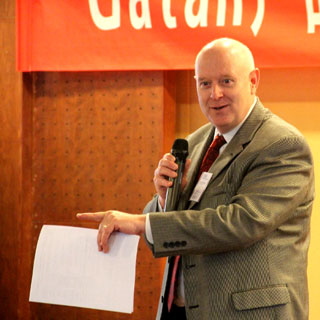Benjamin W. Wood, MBA ’99

Turning Around Roper’s Scientific Imaging

When Ben Wood became vice president of Scientific and Industrial Imaging at Roper Industries in 2002, the division was underperforming. Sales were in decline, manufacturing costs were too high, and the research and development cycle had stretched to nearly three years.
Roper’s researchers wanted to “make great products and great science,” Wood says. “What I wanted them to do was make a great business.”
Wood began the process of turning the division around with a financial analysis to calculate the value of its products, followed by a focus on those that could be commercialized profitably. “We went through all our products and figured out which things were making money and which things weren’t making money,” Wood says. “We invested in the things that were making money and stopped doing the things that weren’t.” As a result, the imaging division, which manufactures primarily in the U.S., Canada, and England, reduced its working capital by 50 percent, while the research and development process shrank to ten months.
What resulted was a leaner, more profitable enterprise that has churned out such products as the newly released K2 camera, which has the ability to photograph single-electron events. The $600,000 camera is used in biology research in areas ranging from genomics to brain synapses.
In 2012, Roper produced IsoPlane, a next-generation imaging spectrograph, which won a Prism award last year. An instrument that measures multispectral channels of light, the IsoPlane has applications in the natural gas industry, physics research, and biomedical imaging.
“The reason that these products are growing so quickly and are so valuable is that they have wide applications,” Wood says.
In addition to the imaging division, Wood is responsible for developing business opportunities for Roper in Asia. This summer, the company will open an office in India set up to provide professional startup services to the 36 companies within Roper’s portfolio. Based on a “hotel” model Roper developed in Shanghai and Singapore, subsidiary businesses can move into the facility in Mumbai without signing a long-term agreement.
“All they have to do is show up and pay rent on the building,” Wood says. “If it works out, they grow; and if it doesn’t, they check out and another business moves in. That’s why we call it a hotel — companies can check in and check out.”
